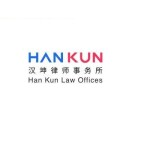Digital transformation is discussed and practiced in various industries across China and the whole world. Artificial Intelligence (AI) related inventions have become important intangible assets that innovative entities are competing to accumulate.
Accordingly, the patent examination practice and application strategy of AI-related inventions have also become a hot topic in recent years. In addition to AI itself, the ‘computer-implemented inventions for new industries’ also include the fields that are related to the implementation scenarios of AI, such as ‘big data’ and ‘business methods’.
The innovation points of such inventions may be the technical means itself, or may focus on business rules or management rules, or may be embodied as algorithms. The diversity of innovation points leads to differences in the patent examination in this field, compared to the patent examination in the traditional electricity field.
Since the State Council of China issued Circular 71 in 2015 which pointed out the need to strengthen the IP protection of innovations in new industries and fields, the Guidelines for Patent Examination have been revised several times. These revisions include but are not limited to, enriching the types of patentable subject matter and exploring the substantive examination standard for the patentable subject matter and inventiveness of such technical solutions.
On August 3 2021, the China National Intellectual Property Administration (CNIPA) released the latest Draft Revision of the Guidelines for Patent Examination (Draft for Comments) (Draft Revision of the Guidelines), which further clarifies the examination provisions for the computer-implemented inventions in new industries to meet the growing and changing needs of innovative subjects to protect their inventions, and simultaneously make the patent protection of inventions still conform to the original intention of the patent system without going beyond the protection to technical solutions.
Highlights and analysis of corresponding strategy suggestions
Incorporating the computer readable storage media and the computer program product into the types of patentable subject matter for inventions, and strengthening the patent protection for pure software innovations (see Section 5.2, Chapter 9, Part II of the Draft Revision of the Guidelines).
Patentable subject matter related to software for inventions
The Draft Revision of the Guidelines clearly states that claims with subject matter of ‘computer readable storage medium’ or ‘computer program product’ can be protected. It is also the strongest protection given to computer program inventions since the introduction of examination regulations for computer program related inventions in the ‘the Guidelines for Patent Examination‘ of 1993.
Specifically, the current patent examination practice has allowed the computer readable storage media to be one of the types of patentable subject matter that can be protected by invention patents.
The Draft Revision of the Guidelines confirms this examination practice and further specifies the computer programs product claims are also one of the types of patentable subject matter that can be protected by invention patents. It achieves an important step for the protection of computer program related products from tangible products (such as equipment, storage media) to intangible products (such as computer program products released on the internet).
It undoubtedly expands the scope of infringing products and reduces the difficulties of obtaining evidence. For example, previously, if a patent infringing program product was found on the internet for download, it may be necessary to prove the existence of its tangible carrier medium to be consistent with the subject matter of the claims (e.g., device, storage medium, etc.). However, once computer program related products also include intangible products, as long as the computer program of the alleged infringing product can be obtained from the internet, the evidence can be obtained without worrying about the existence of tangible media.
Compared to the examination practices of the US, Europe, Japan, South Korea, and other world IP offices, the revision of the patentable subject matter in the examination guidelines conveys a signal that the CNIPA will perform comprehensive and strong protection on the computer program related inventions, which is undoubtedly a great encouragement for the vast number of software innovation entities to continue their innovation.
Patent application strategies for AI new industry inventions
An additional computer readable storage medium claim and computer program product claim may be added to the patent application file with the form of alternatively referring to prior method claims.
Further improving and clarifying the examination standard for the patentable subject matter of AI new industry inventions, and improve the predictability of determining the patentable subject matter (see Section 6.1.2, Chapter 9, Part II of the Draft Revision of the Guidelines).
Examination standard for the patentable subject matter of AI new industry inventions
The Draft Revision of the Guidelines further improves the examination standard for the patentable subject matter of inventions, and adds examples to illustrate that if at least one of the following conditions is met, the claim of the computer implemented invention in new industries complies with Article 2, Paragraph 2 of the Patent Law:
1. The data processed by the algorithm is the data with definite technical meaning in the technical field. The execution of the algorithm can directly reflect the process of solving a technical problem by using natural laws, and obtaining technical effects; or
2. There is a specific technical correlation between the algorithm and the internal structure of the computer system, which can solve the technical problem of how to improve the hardware operation efficiency or execution effect, thereby obtaining the technical effect of improving the internal performance of the computer system that complies with natural laws; or
3. The solution targets big data in specific application fields, and uses algorithm tools to mine the inherent correlation in the data that complies with natural laws, thereby solving the technical problem of how to improve the reliability or accuracy of big data analysis in specific application fields, and obtain corresponding technical effects.
It can be seen from the above three conditions that although innovations included in the patentable subject matter should be based on ‘technique’, they can still be protected as a patent as long as the innovation can be associated with ‘technique’.
Condition 1 mentioned above is relatively easy to understand and will not be further explained. Conditions 2 and 3 are explained below.
Condition 2: Algorithm and the internal structure of the computer system
The Draft Revision of the Guidelines takes ‘internal performance improvement of computer systems that comply with the natural laws’ as a typical condition that comply with Article 2, Paragraph 2 of the Patent Law.
Specifically, the algorithm in some solutions may not involve specific technical fields such as image processing or industrial control. However, the implementation or improvement of the algorithm is not only related to an abstract algorithm but also has technical correlations with the internal structure of computer systems.
Therefore, it can solve the technical problems of how to improve the efficiency of hardware operation or execution effect (including reducing the amount of data storage, reducing the amount of data transmission, and improving the hardware processing rate, etc.), and then it can obtain the technical effect of improving the internal performance of the computer system that complies with natural laws. In this case, the solution is also the technical solution described in Article 2, Paragraph 2 of the Patent Law.
The key point of this condition is that the improvement of the internal performance of the computer system is achieved by the specific technical correlations between the algorithm characteristics and the internal structure of the computer system, which also complies with the natural laws.
In other words, the algorithm scheme that complies with Article 2, Paragraph 2 of the Patent Law should not only involve the realisation of abstract concepts but also involve how the algorithm cooperates with the computer system having the internal structure of software and hardware in order to work (hardware structures such as memory, processor, software structures such as databases, threads, processes).
If a solution reduces the time for a computer system to run a program only through the abstract algorithm itself (such as an abstract array sorting method, an array search method, etc.), it does not meet the condition of ‘the internal performance improvement of the computer system that complies with natural laws’ described here.
Condition 3: Algorithm tools to mine the inherent correlation in the data that complies with laws of nature
In recent years, the application scenarios of using algorithm tools to mine internal correlations from big data grows rapidly. Traditionally, the task of mining internal correlations from a large amount of data can be described as a difficult, complex, and cost-intensive task. However, today it can be done by a combination of big data and artificial intelligence algorithms. These algorithms play an important role in many fields, such as smart medical care, financial insurance, and e-commerce, with high application value.
On one hand, relevant innovative entities wish that their innovations related to big data algorithms can be protected as patents. On the other hand, policymakers are also trying to deal with issues such as how to define the techniques of such technical solutions and the boundaries of protection for them.
We are pleased to see that the Draft Revision of the Guidelines provides a way of determining the patentable subject matter for the inventions of big data algorithm solutions. That is, if internal correlations in data mined by the algorithm tools comply with natural laws with solving technical problems of big data analysis accordingly and obtaining corresponding technical effects, this solution is also the technical solution described in Article 2, Paragraph 2 of the Patent Law.
Then the question arises: what kind of correlations in the data belongs to the so-called ‘internal correlations that comply with the natural laws’? For example, the correlation between ‘symptoms’, ‘medical images’ and ‘diagnosis results’ is certainly an internal correlation that ‘complies with natural laws’; the correlation between ‘machine operation data’ and ‘machine failure types’ also certainly belongs to the internal correlations that ‘comply with natural laws’. The correlations between these data with clear technical fields usually do not lead to much controversy.
Therefore, the most concerned question is: if the data is not collected from the technical field with such a clear application and the data itself does not have a clear technical field attribute, then whether it is possible to have the ‘internal correlation that complies with nature laws’ in the data?
Combining the two examples below (Zhengzhou, September 2021, ‘Business Communication and Training Course in the Electrical Field’) , the ‘internal correlation that complies with the natural laws’ is discussed further.
Example 1: A method for analysing the propensity of using e-coupons, which is characterised by comprising:
Categorising an e-coupon based on information of the e-coupon to obtain e-coupon types;
Obtaining user sample data based on the application scenarios of the e-coupons;
Extracting user behaviour characteristics from the user sample data based on user behaviours, the user behaviours comprising: browsing web pages, searching keywords, following, adding to cart, purchasing and using e-coupons;
Training the recognition model of e-coupon using propensity for different types of e-coupons with the user sample data as training samples and the user behaviour characteristics as attribute labels; and
Predicting using probability of the e-coupons by the trained recognition model of e-coupon using propensity, obtaining the using propensity of the user for different types of e-coupons.
The solution in Example 1 belongs to the patentable subject matter as the method mines the internal correlation between user behaviour characteristics (long browsing time, large searching times, frequent use of e-coupons, etc.) and the propensity to use e-coupons. This internal correlation is considered as complying with natural laws.
Before further discussing Example 1, we consider Example 2 for comparison.
Example 2: A price prediction method for financial products, which is characterised by that the method comprises:
Obtaining the price prediction model by training a neural network model using N+1 daily indicator historical price data of financial products, where the first N daily indicator historical price data are used as sample input data and the last 1 daily indicator historical price data are used as sample result data; and
Using the price prediction model and recent N daily indicator historical price data to predict the price data of the financial products in a future day.
The solution in Example 2 does not belong to the patentable subject matter, as the correlation between the historical financial product price data and the future price data is considered to follow the economic laws rather than natural laws.
Seeing this, there may be a question. The correlation between user behaviour and the propensity to use e-coupons and the correlation between historical price data and future price data both seem to be related to human behaviour. Why is the former one considered to comply with natural laws, while the latter one is considered to be the economic laws?
The issue involved here is a complex question about human attributes. In fact, humans have both biological and social attributes. Those behaviours and rules that follow the biological attributes of humans can generally be considered as having technical attributes and belong to natural laws. While those behaviours and rules that follow the social attributes of humans can generally be considered as having economic attributes and belong to the human-made rules.
More specifically, specific behaviour characteristics involving a single individual (such as specific interaction behaviours between a user and applications, like click actions, browsing time, and search times) can be considered as having biological properties and comply with natural laws.
On the other hand, statistical characteristics involving human groups (such as the result of a large population of human actions, like price changes, and buying and selling volumes) are generally considered as having social properties and belong to the range of economics or sociology.
Because the data correlation mined in Example 1 involves the correlation related to the specific behaviour of an individual user (such as browsing the web, searching keywords, following, adding to the shopping cart, purchasing, and using e-coupons), the correlation can be considered as an internal correlation that complies with natural laws. On the contrary, because the data correlation mined in Example 2involves the correlation between historical prices and future prices as statistical data derived from group behaviours, the correlation is considered as not complying with natural laws but economic laws.
Patent application strategies for AI new industry inventions
When drafting an invention patent application related to an algorithm, it is necessary to describe the technical meaning of the data or describe the details of how the algorithm interacts with the internal structure of the software and hardware of the computer system, or reflect the natural laws that the internal correlations of the data to be mined comply with.
Further improving the examination standard for the inventiveness of the invention patents, and further illustrating that the algorithmic features or business rules, method features, and technical features, which are ‘functionally support each other and have an interaction correlations’, are considered as a whole in the examination of the inventive step, making the standard of inventive step more objective (see Section 6.1.3, Chapter 9, Part II of the Draft Revision of the Guidelines).
Examination basis for the inventiveness of invention patents in AI new industries
In the Draft Revision of the Guidelines, the logic for determining the inventiveness of the inventions in the new industries is a further interpretation of the ‘integrated’ consideration of technical solutions in the standard for determining inventiveness in China's patent examination practice. According to the Draft Revision of the Guidelines, combining with the characteristics of new industry inventions, the following key points need to be considered in the inventive step.
1.Problems improved by the algorithm in specific technical fields: if the algorithm features are applied to specific technical fields and can solve specific technical problems, the contribution of the algorithm features to the technical solution shall be considered during the inventive step examination;
2. Combining the algorithm with the internal structure of the computer system to jointly improve the internal performance of the computer system: if there is a specific technical correlation between the algorithm features and the internal structure of the computer system, which achieves the improvement of the internal performance of the computer system, the contribution of the algorithm features to the technical solution shall be considered during the inventive step examination;
3. Technical features that help improve business rules and methods: if the implementation of business rules and method features requires adjustment or improvement in technical means, the contribution of the business rules and method features to the technical solution shall be considered during the inventive step examination;
4. Taking the improvement of user experience as an auxiliary factor: if there are improvements of user experience brought or produced by technical features, or brought or produced by the technical features, algorithm or business rule and method features jointly, it should be considered during the inventive step examination.
Here, the ‘user experience’ is explained further as many user-oriented front-end applications of software are related to improving the user experience.
Improvement of user experience as an auxiliary factor
The original intention of many technical solutions may be the innovation of business rules or management rules. Since the innovation of these business rules or management rules requires the improvement of technical means, the overall solution forms a technical solution.
There are also some technical solutions with an ultimate purpose to bring a better experience to users, although the means used are all technical means. For these technical solutions, if their function is explained purely from a technical point of view, it will appear isolated and broken or even difficult to understand.
However, taking these technical features together with the features of the business or application context that are closely associated with them as a whole, and combining the description of the technical effect and the enhancement of user experience, will help to further emphasise the role of the technical means in the overall solution. Further, the ingenuity of scheme improvement as a whole can be fully and intuitively appreciated.
However, it should be emphasised here that, according to the Draft Revision of the Guidelines, the improvement of user experience cannot be independently used as a reason for inventiveness argument mainly due to the following two points:
In addition to the improvement of user experience, technical effects should also be recited;
Even for the improvement of user experience, it should also be recited what technical means result into the improvement of user experience.
In fact, the effect of ‘improvement of user experience’ itself does not necessarily have technical attributes. Therefore, ‘improvement of user experience’ alone is not sufficient for the arguments of technical effects. For example, the improvement of user experience may be brought by non-technical means. Non-technical means, such as pure business rules, aesthetic features, and artificial rules, can also achieve the improvement of user experience. Therefore, we cannot consider the improvement of user experience without technical effects. A detailed analysis from technical points of view about what effects it can bring is required.
Furthermore, when discussing the ‘improvement of user experience’, it should be avoided to only discuss the effect of ‘improvement of user experience’ itself. Instead, the discussion should involve what technical means lead to the improvement of user experience, to link the technical means with beneficial effects.
The discussion should also reflect the functional mutual support and interaction between non-technical features, such as business rules and method features, and technical features, which will contribute to inventiveness step examination and arguments.
Patent application strategies for AI new industry inventions
When drafting a patent application, it should emphasise the interaction between features, especially the interaction between non-technical features (such as algorithm features, business rules, and method features) and technical features, such as how the improvement of the algorithm can help to achieve a certain technical effect in a specific technical field, and which technical means need to be adjusted and improved for business mode innovation.
When using the effect of user experience improvement to reinforce inventiveness arguments, it should be noted to describe what specific technical means or what combination of technical means and non-technical means contribute to the user experience improvement.
Future trends
With the rapid changes in technology, the corresponding patent application and examination practices in China are also developing accordingly. Let our thinking closely follow the trend of technological innovation and the latest examination practices of the CNIPA to draft patent application files with better grant prospects and higher value, thereby maximising the protection of innovations.

Xiaowei Wei
Partner
Han Kun Law Offices
T: +86 10 8516 4280
Xiaowei Wei is a partner in Han Kun Law Offices. She has extensive experience in patent prosecution, reexamination, counselling, invalidation and litigation. The technical fields in which she practices in include digital communications, computer, semiconductor, consumer electronics, signal processing, artificial intelligence.
Xiaowei has helped a considerable number of worldwide renowned companies obtain nearly a thousand patents in China, and provided them with valuable advice for patent prosecution strategies in China. She has also helped many Chinese companies obtain patents in Europe, the US, and other jurisdictions.

Lili Wu
Partner
Han Kun Law Offices
T: +86 10 8516 4266
Lili Wu is a partner in Han Kun Law Offices. She has extensive experience in strategically managing patent portfolios for both multinational clients and small and middle size clients to help increase the value of their IP assets in China. Her experience spans various technology industries, including electronic devices, internet, telecommunications, information technology, automobile, medical device, manufacturing and green energy.
Lili has litigated many patent cases over the years, and has represented clients in several court cases which have been recognised as typical cases by the PRC Supreme People’s Court and the Beijing High Court. She is also active in international associations, leading and participating in the study of legal issues and drafting of reports and is a frequent speaker in different international conferences.












